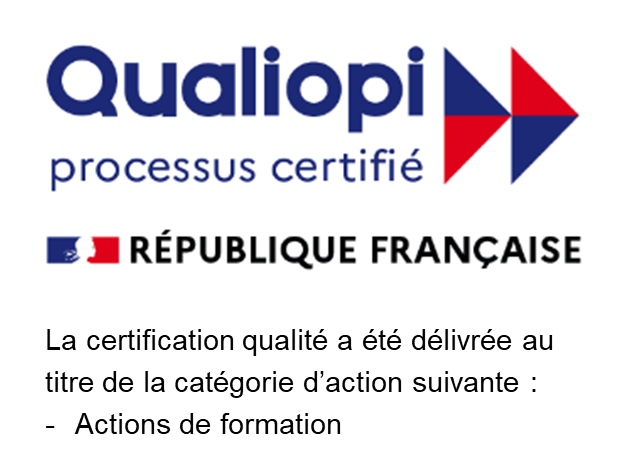Is Diversity Enough? DEI's Impact on Business Performance

“Leaders must acknowledge that increasing demographic diversity does not, by itself, increase effectiveness; what matters is how an organization harnesses diversity, and whether it’s willing to reshape its power structure.”
Today, workforces are just as diverse as the global markets they serve. With a growing number of organizations talking about diversity, equity and inclusion (DEI) – questions are often raised around its impact on employees and organizations as a whole. Why does DEI matter? Are diverse workforces really that much more productive? And is diversity alone enough to benefit a workforce and the businesses that employ them?
The variety of perspectives and ideas that diverse workforces bring together do contribute a wealth of insights and approaches that can lead to groundbreaking solutions and more effective decision-making. But embracing diversity isn’t just about hiring a diverse workforce; it's about leveraging that workforce's full spectrum of human experience to achieve superior performance. Companies that
cultivate
diverse and inclusive teams – that support and leverage diversity – are better equipped to navigate complex challenges, attract and retain top talent, and sustain long-term growth and success. Companies that don’t are often less productive, due to miscommunications, misunderstandings, and employee disengagement, distrust and discord.
Diversity is Viewed Differently from Culture to Culture
Before we take a look at diversity’s potential, it’s important to note that diversity itself is viewed differently, depending on where you are in the world. For instance, in Canada, there has been an increased focus on the inclusion of indigenous people. Nigeria presents opportunities for growth, due to biases around the intersectionality of gender, ethnicity and socio-economic backgrounds. In India, discussions around DEI will require addressing patriarchal and caste systems. With this in mind, stakeholders should always be mindful of the cultural, social, and geo-specific norms and biases that exist in a given location when addressing DEI-related discussions around organizational goals and opportunities for growth.
Diversity’s Impact on Team Success
A recent LinkedIn study revealed some compelling evidence about the ways diversity impacts business performance:
- 60% of respondents said that diversity within their sales team has contributed to their teams’ success
- Organizations in the top quartile for gender diversity have a +25% likelihood of financially outperforming their peers
- Organizations in the top quartile for ethnic diversity have a +36% likelihood of financial outperformance
- Diverse companies earn 2.5x higher cash flow per employee
- Inclusive teams are over 35% more productive
- Diverse teams make better decisions 87% of the time
The Disconnect: Building Diverse Teams vs. Fostering Them
Many companies commit to DEI but often stop at the D: diversity. Assuming that hiring a diverse workforce alone is enough, they often find themselves surprised that their business isn’t performing in ways the above statistics imply it should. Or they may discredit the findings altogether. But to truly see the results that a diverse workforce can provide and fulfill the duty of care they have to their employees, attention also needs to be given to fostering equity and global inclusion. Only then will employees feel seen, valued and engaged, workforces be more able to collaborate and innovate, and companies benefit from the downstream impacts of their DEI initiatives.
Understanding DEI: The Three Pillars
To truly benefit from DEI, it's important to understand its three pillars:
- Diversity - The presence of differences within a given setting, including race, gender, age, and cultural experiences
- Equity - Ensuring fair treatment, opportunities, and advancement while striving to identify and eliminate barriers that have prevented the full participation of some groups.
- Inclusion - Creating environments in which any individual or group can be and feel welcomed, respected, supported, and valued.
How Organizations Can Help Themselves: Develop a Mindful DEI Initiative
To create an effective DEI initiative, start with an internal assessment of your workforce, policies, and culture. Next, define areas for improvement and set clear, measurable goals. After securing commitment from all levels of the organization, provide DEI training, establish employee resource groups and mentorship programs, and integrate DEI principles into all aspects of the organization. Finally, review and adjust policies on a regular basis, maintain open communication, and create safe spaces for feedback to ensure continuous improvement.
How NetExpat Can Help: Enhancing DEI Initiatives Through Cultural Agility
When supported by all three aspects of DEI, diverse teams are more successful because 1) they bring varied perspectives, experiences, and approaches to problem-solving and 2) those perspectives are encouraged and proactively leveraged. Working closely with a global advisory services provider builds on an organization’s DEI initiatives by fostering cultural agility within your organization. When viewed through a DEI lens, cultural agility significantly enhances DEI efforts and interactions with colleagues, clients and with customers, fostering a cohesive culture and workforce that’s better positioned to solve problems and make decisions. Below are just a few of the advantages:
Enhanced Creativity and Innovation
Different backgrounds provide a broader range of ideas and solutions, making diverse teams more likely to challenge the status quo and think outside the box
Stronger Decision-Making Ability
Varied perspectives encourage thorough evaluation of options, reducing groupthink, and ensuring that diverse teams represent the perspectives and behaviors of global markets
Broader Market Insight
Diverse teams understand and cater to diverse customer bases, providing cultural insights that are critical for developing effective global market strategies
Improved Problem-Solving
Different skill sets and experiences lead to more robust solutions, since diversity fosters debate and discussion, which improves critical thinking
Higher Employee Engagement and Retention
Inclusive environments boost morale and productivity, with employees from different backgrounds learning from one another, enhancing their growth and satisfaction
Greater Resilience and Adaptability
Diverse teams adapt better to change by drawing from a wider range of experiences, allowing them to anticipate and respond effectively to unexpected challenges.
Increased Reputation and Competitive Advantage
Companies with diverse teams are seen as more socially responsible and attractive to top talent, and a reputation for diversity helps attract customers who value inclusion.
Unlocking Diversity’s Potential
The Harvard Business Review has argued that companies that adopt a “radically new way of understanding and leveraging diversity could reap the real and full benefits of a diverse workforce… not only recruiting and retaining more people from underrepresented ‘identity groups’ but also tapping their identity-related knowledge and experiences as resources for learning how the organization could perform its core work better.”
When companies take a mindful approach to DEI, their diverse teams are more effective than homogeneous teams or diverse teams that don’t learn from their members’ differences. Additionally, they send a clear message that varied points of view aren’t just encouraged, they’re valued. Employees are empowered to bring their authentic selves to work, collaborate fully with colleagues, and better achieve company goals, innovation and growth.
DEI and the Talent Pool Advantage
- Employers that posted about diversity saw 26% more applications from women
- Companies with a DEI team were 22% more likely to be seen as industry leaders with high-caliber talent
- 76% of employees and job seekers said diversity was important when considering job offers
- 60% of employees want business leaders to speak up on diversity issues
- 80% of survey respondents want to work for a company that values DEI
Embracing Diversity for Success
It's clear that diverse teams are more productive, but only when they receive the support they need to thrive. While navigating the complexities of this process might seem like a challenge, it doesn’t have to be. Global advisory service providers are uniquely positioned to help companies develop impactful DEI programs that leverage the collective intelligence of diverse workforces so businesses can succeed in an equally diverse global market.
To learn about the intersection of DEI, cultural agility, and best practices regarding your organization’s DEI strategy, read our blog post,
DEI and Intercultural Training: Best Practices for Talent Acquisition and Global Mobility or contact us at
info@netexpat.com
Share this post














